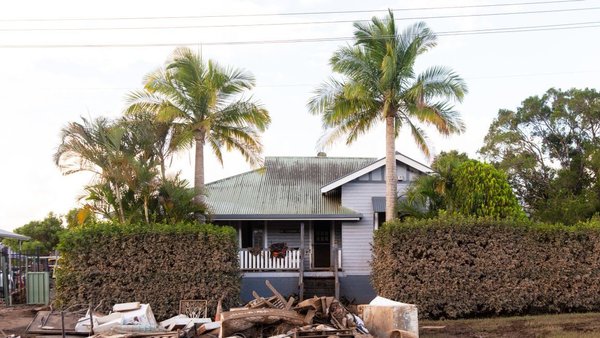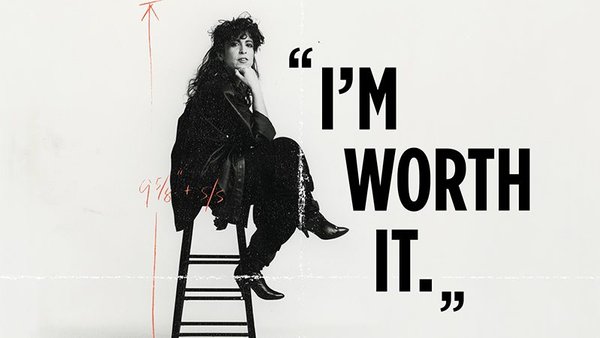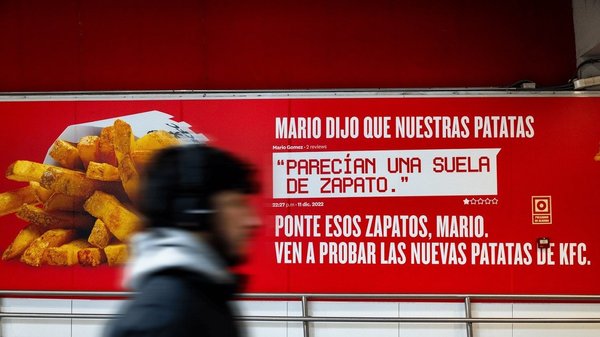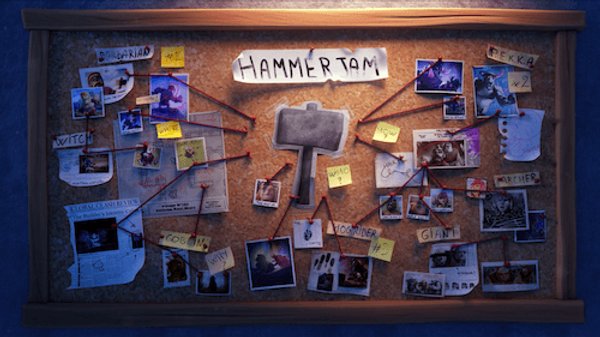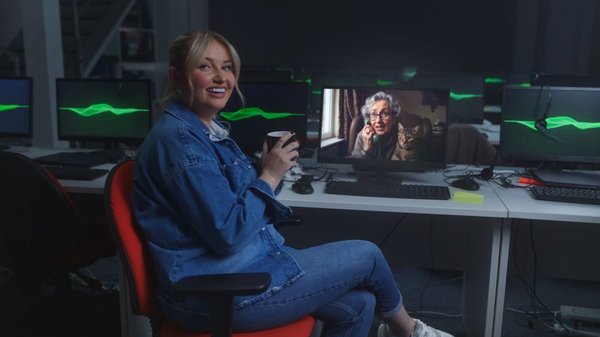Insight & Strategy
Insight & Strategy: Meet Graham /
Why a government organisation built a macabre sculpture to raise awareness of human vulnerability
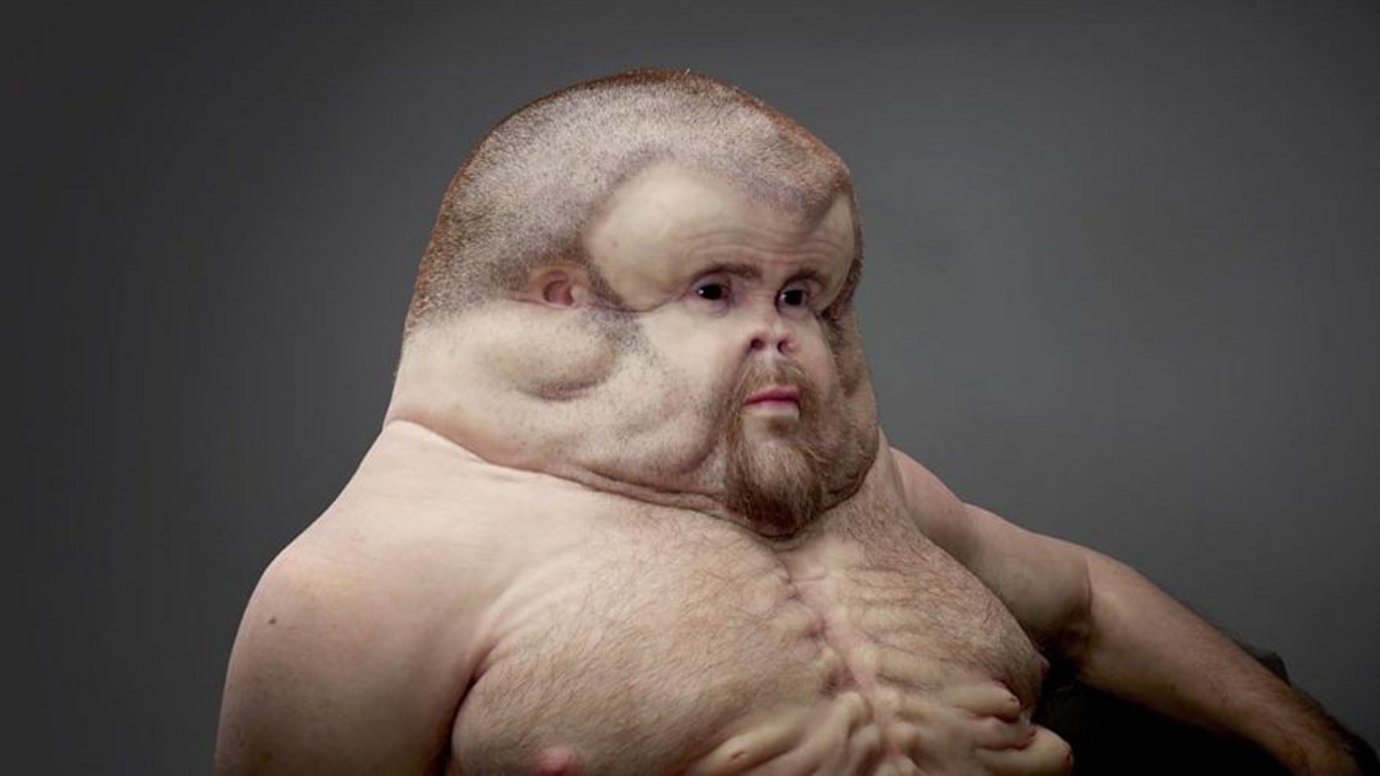
As we reported in July last year, the Transport Accident Commission in Melbourne has depicted what a human would have to look like to withstand a crash in order to show just how badly equipped our bodies are to handle even a slow-speed traffic accident.
Working with a trauma surgeon, a car crash expert and artist Patricia Piccinini, the government organisation built Graham – an interactive sculpture that shows how the human body would need to change to withstand a car crash.
We spoke to Matt Pearce and Evan Roberts, planner and creative director at Clemenger BBDO in Melbourne, to find out more about the project.
The biggest challenge of all facing the TAC is complacency, particularly when other issues capture the public attention more than road safety does – it feels like something we’ve solved rather than something that’s still a problem.
Matt Pearce, Clemenger BBDO
Tell me about TAC as a company, what are their biggest challenges?
Pearce: TAC is an abbreviation for the Transport Accident Commission, a government-run body that has two roles. The first is the prevention role, so educating road users about road safety. Not just through advertising, but also by installing safer road environments or promoting the use of safer vehicles – so preventing crashes from occurring using education and infrastructure.
Secondly, they are a social insurer. So every Victorian who registers a car on the roads of Victoria pays a fee which insures them in the case of a crash. So if you are injured on the roads of Victoria it’ll be paid for or compensated by the TAC. It’s similar to the NHS, in that it’s all paid for by the public. So it does a lot more than simply educate how to behave on the roads, it also helps bring people back to independence and recover from road accidents.
They’ve got those dual roles, one as a protector/educator, the other as an insurer. But, in a public sense, its role has always been as a road safety expert. For 30 odd years, it has classically made very provocative communications often including crash scenarios depicting what it means to be involved in a crash and the social shame of being a drink driver.
In terms of their challenges, the road tolls have been going down year-on-year but now we are hitting a point where the road toll in Victoria is stagnating and in some cases it’s going back up. The truth is that it’s getting harder and harder to reduce the road toll, roads are getting safer and so are cars but people still make mistakes. One of their biggest challenges has been this pivot away from the old way of communicating about road safety, which used to be the ‘Crash, cry, die’ approach, so just showing people the consequences of making bad decisions on the road.
The new way of thinking acknowledges that people are vulnerable and that they will make mistakes so we need to make sure that they’re protected in the road environment. And the point is that we need to find new ways to actually change driver behaviour for the better because the old shock tactics just don’t work anymore. So their biggest challenge is complacency, how to get Victorians to really look at road safety differently when they’ve heard it all before.
Another challenge is getting Victorians to understand this new idea called Towards Zero, which is underpinned by what they call the safe system: safe roads, safe people, safe vehicles and safe speed. The more that the road users, drivers, motorcyclists, pedestrians and cyclists understand the need for safer speeds and safer vehicles the more likely we are to reach the goal of zero road deaths on Victorian roads. So, to sum up, I think the biggest challenge of all facing the TAC is complacency, particularly when other issues capture the public attention more than road safety does – it feels like something we’ve solved rather than something that’s still a problem.
Was bringing attention to the Towards Zero project the main objective, or were there more?
Pearce: Since the TAC implemented Towards Zero, we’ve had a few different ways to bring it to life – this is probably the third iteration cementing this idea of Towards Zero. We started with the idea of ‘there’s no one someone won’t miss’, and that was to create belief in zero being a worthy goal. In Man on the Street (video below) we reminded Victorians that the reason we have a goal of zero isn’t because of the people who have died but because of the people who are still living that we care about. So it spoke to people who feel comfortable about the statistics and numbers around the road toll and who feel like it’s going down, and showed them what 70, 80, 100 people actually means.
Graham was the next iteration under Towards Zero, starting to talk fundamentally about human behaviour on the road, and why we actually need to take more care and build a safe system around us, just in case something does go wrong on the road.
It was important for us to find a new way to talk about vulnerability and make people notice it again without relying on the old shock tactics and fear.
Matt Pearce, Clemenger BBDO
Did you have a creative brief?
Pearce: Yes, our brief was to communicate to the Australian public the concept of vulnerability, and that when we are using the road network as pedestrians, riding a motorbike or driving a car, we are vulnerable and if we are in a crash we do break. It sounds like an obvious thing that people have heard before, but it needed to be reinforced because a lot of people have forgotten or become complacent and sometimes just simply feel protected when they’re in their car (rightfully so in many cases, because they do have airbags and crumple zones).
But the idea that we’ve forgotten about our vulnerability is really important because that’s the reason to take more care – we aren’t actually designed to be on these roads at all. That was the focus of the creative brief, put vulnerability on the agenda, and to really start to challenge preconceived notions people have about it. People have seen the clichés of ‘we’re like glass’ and ‘we break really easily’, so it was important for us to find a new way to talk about vulnerability and make people notice it again without relying on the old shock tactics and fear.
Getting people to understand their vulnerability is quite a broad brief, you could have taken it anywhere, why did you choose Graham?
Roberts: It was actually tricky in a lot of ways because we had to show the vulnerability of the human body in a way that was all-encompassing, so it had to relate to a driver, a passenger and a pedestrian all at once. That meant that there wasn’t one simple metaphor we could use, so we needed to focus on the human body itself not on an accident. So, in a weird way, it just had to be Graham – it was the only right answer we came to in the end. We knew we had to step away from showing consequences and being shocking, but we also needed something that would hook people in – so it became shocking in a different way. Then, his name came from trying to make him more accessible.
How did you decide to get a crash-test expert, a trauma surgeon and an artist to collaborate in building him?
Roberts: When we had the idea we loosely knew that we needed someone who knew about car accidents and someone who knew about all the trauma involved and what happens to the human body and quite immediately knew we wanted an artist to do it – in fact, the other creative director Steve and I knew we wanted Patricia. Finding the exact people, Christian and David, was something we did through client connections, as they’re affiliated with a lot of crash research and a lot of the hospitals, but we knew quite quickly that we wanted to include those three aspects in building Graham.
How did the process of them all working together work?
Roberts: It was complicated because they are all incredibly busy people. Patricia met with the surgeon Christian first at the hospital, he discussed all the major problems that he sees a lot of and she asked him questions and threw a few ideas at him. I think one of the most important things that he told her was that she needed to be thinking more airbag and less armour, because armour doesn’t actually transfer away any of the energy from the crash – and there were a lot of little moments like that.
So she would have briefings and discussions with them and then go and do some work before chatting to them again. And I think they’re really pleased with what she’s taken on board and what that has evolved into. The creative process was all hers, but it was all very much based on what she’d learnt from those guys so it was very interesting and something that she felt was a great process for her as well.
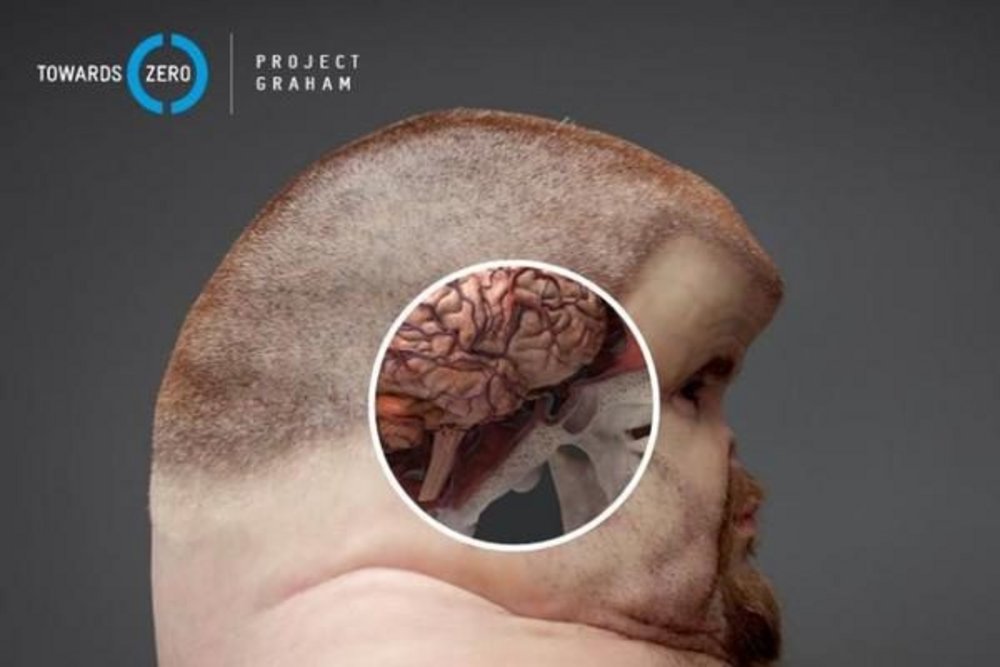

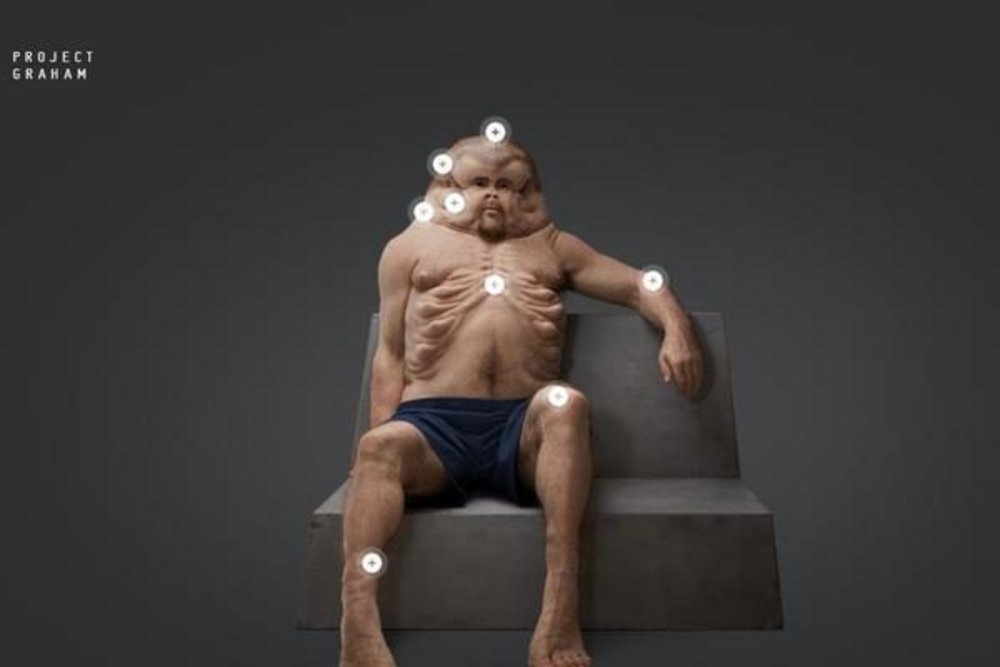
Was there a reason why you thought he should be a physical being rather than going completely digital?
Roberts: We wanted him to be as human and as relatable as possible, and when you see it in the flesh he is remarkable. What the site does is fantastic and we love that result, but seeing him in person, so to speak, is an entirely different experience and there is a different connection when you are in the room.
I don’t know if you’ve ever seen Patricia’s work, but you do really get a sense that they’re alive and you’re half expecting them to move. We really wanted that, we wanted people to be that hooked into it. You were saying earlier that you want him in the magazine because he’ll turn heads, but I think a big part of that is him feeling as human as possible. It’s easy to find him repulsive, and a lot of people do, but they still can’t look away because they just need to know a little bit more.
I think it’s one of the great parts of him, even from a practical point of view we can actually use him for more this way. We can tour him, get more schools to him, get universities going to see him and make him more of a talking point. We’ve filmed him and shot him as well so we can move him around and use him as a prop, to speak crudely, so there were multiple things – but really it’s that genuine connection that we want people to have.
Pearce: It was also important for us to make sure that when people meet Graham in the flesh, and even online, that they have reflected on their own bodies. So if it just felt like a science experiment without a physical object at the end then it might have been a bit of an empty message. But when people know they can see him and compare his body to theirs, that prompts them to think really deeply about their vulnerability and hopefully reflect on that when they’re on the road: ‘I’m not built like Graham so I know that I need to take more care whenever I’m making a road decision, such as purchasing a car or driving around.’ So it was important for him to appear as real as possible.
Roberts: There were quite a few people talking about exhibitions that they went to when they were kids and the things that have stuck with them, so we’re really hoping that for future drivers, children in high school and kids in schools, it’ll be an image that sticks with them forever. We want them to remember that message, remember that they can’t possibly be Graham, remember that their bodies are vulnerable. That also really played a huge part in making sure that there was a human connection there.
Who were you targeting?
Pearce: Given that human vulnerability is a human concept, everyone has to relate to it to some extent. We’re all road users, we all ride our bikes to work or drive ourselves home at night, so it was important for it to be an all-encompassing message. That’s why Graham works, he’s another human like me and it doesn’t matter if he’s behind the wheel or on a motorbike, he’s something we can relate to.
We were tasked with talking to the general Victorian road user population, which is 5.5 million of us, but most importantly this was meant to resonate with the most at risk targets and also the future generation. So this idea definitely had to appeal to people aged 18-34, and be something that would prompt those who are most at risk, because younger drivers over index in road trauma because they are more prone to risk taking behaviour. Second was the next generation who will one day be drivers or motorcyclists themselves, we wanted to make sure that this followed through into schools and that Graham became a mascot for road safety, so they will have that image firmly planted in their heads the moment they get behind the wheel.
It was a very wide target group, because every single Victorian is a road user, but most specifically it was the at risk and future populations that we were targeting.
We’re really hoping that for future drivers, children in high school and kids in schools, it’ll be an image that sticks with them forever. We want them to remember that message, remember that they can’t possibly be Graham, remember that their bodies are vulnerable.
Evan Roberts, Clemenger BBDO
Did you do any research around whether something like Graham would be more effective than the standard scare tactics?
Pearce: There are two parts to that, we know that when it comes to road safety or social marketing, that scare tactics, particularly for well-entrenched or complacent issues like road safety, are losing their sting. So a shocking, violent commercial that’s on TV is just met with: ‘Yes I acknowledge that that’s dangerous, but it doesn’t really prompt me to reflect on my own behaviours because it won’t happen to me.’
Young drivers are very short term focused, they care about other things rather than a certain death that’s depicted on TV. They care more about how they look and there’s some classic UK work for anti-smoking which really played on young people’s egos and appealed to that through a less obvious scare tactic – so that’s something that we have in the back of our minds.
We didn’t specifically go and do market research around the Graham concept, but we knew that provocative new ideas that are inherently social and generate news would be a more effective way to convince people to share this idea of vulnerability at a mass scale. Rather than just trying to target them or do something unexpected in a commercial.
You mentioned that this generates news, how else have you been promoting it? How important has the PR been?
Pearce: Yeah, it has been everywhere. We’ve been really blown away by its uptake; we didn’t expect anything quite like it. Even the morning that we woke up we were thinking: ‘I wonder how it goes’, because we haven’t spent a cent on media at all, not even paid social. We haven’t paid a dollar for any media spend online or broadcast, we invited press to the launch event itself and we PR-ed it to other people, we sent it to networks we know and we had a radio interview with Neil Mitchell.
Roberts: He’s a very influential radio presenter, the rest of the media listen to him so his opinion of it was important, and luckily he liked it!
Pearce: So, in terms of promoting it, apart from the media launch on the day we revealed Graham to the world, we haven’t done much. I guess the very visceral image of Graham just hanging out on his bench really picked up global attention and we’re really glad it has actually had so much impact.
Why did you decide to incorporate augmented reality?
Roberts: We didn’t need augmented reality, per se, but we always thought of Graham as a catalyst for conversation and there was so just much information behind him that we wanted to deliver and have people talk about. We could have done it with leaflets or handouts, but we wanted to make all the information fun and intriguing and also make sure it was appealing to everyone.
Another part of the augmented reality is that the tablets are on a little plinth of their own at around knee-height. Initially that was so they didn’t obscure Graham, because we didn’t want anything else to be in the way when you were approaching him, but we realised that actually put them right at kid height. That means children can pick them up without the risk that they’ll drop and break it, so it really is accessible for everyone. Someone noticed the other day that there was a mum, grandma and child all sitting around the AR with the mum highlighting all the parts of the body to show in-depth how vulnerable the human body is. So using Google Tango was another news hook, but it is also just a really great vehicle to deliver information in an entertaining way.
Pearce: You can go to any museum or any gallery around the world and the people who gravitate towards the screens are mostly kids. So for us it was important to have something interactive that kids would want to play with and look at rather than just hoping they’d appreciate the art for what it is. There is a huge learning component to this project being implemented in the curriculums at schools so we wanted to make sure that the kids had something to do whilst they were there. And also learn a bit more about Graham other than just: ‘What’s that thing?’ – so it was key to have AR across the entire project.
Roberts: Tango actually saved our skin in a little way because we had just figured that augmented reality would be an easy thing to do. But when it’s a 3D object without tags on it – and you obviously don’t want to put tags on a beautiful artwork – it becomes very hard. So luckily Tango maps an entire room and that was really the only way we could find to do it. And it was actually the first time Tango has been used in Australia, which is great for us as well.
People have been coming to see Graham, how many so far? Do you have any preliminary results?
Pearce: In terms of going to see him in person, it’s been in the tens of thousands so far, and that’s counted by someone sitting there clicking. We do have to bear in mind that he’s in the state library of Victoria where there is through traffic, but from what we’re seeing a lot of people are going out of their way to meet him in person, which is a great little insight.
And because it’s been everywhere – and all the news networks have been quite generous and included a link to the Meet Graham website – we’ve had about 1.5 million unique visitors to our website, which is pretty massive, huge, in a week. And that’s worldwide, but in Victoria it’s also in the very high numbers – I can’t actually share the exact numbers because that’s a government thing, but a good proportion of the views are from Australia.
What we found the most interesting of all is when people actually visit the Meet Graham website, they’re spending well over two minutes exploring. If you’ve ever worked on a content-based website, when the traffic coming in isn’t for banking or booking a holiday, two minutes is a long time. And people are also exploring at least seven pages, and that’s even higher when it comes to Australia, so we’re seeing incredible traffic – it almost melted our Google Analytics down.
It’s tapering off now because we’re not spending money on media at the moment, but we have been seeing huge numbers. And the number of visitations to meet the real Graham will just keep growing as he goes to the eight key regional areas across Victoria. He’ll be living in each regional centre for a couple of weeks and we’ll be promoting through local press for people to go and meet him in person. We are actually already being asked ‘When can I see him in Bendigo’, or ‘When can I see him in Shepparton’.
Roberts: And there’s the potential to take him out-of-state as well, I think an inter-state move would be lovely and obviously he can travel.
Pearce: It would be good to see him in London one day.
That’s pretty amazing, and if you think of him as what he really is – a public service message about staying safe on the road – then it’s even more impressive that people are really engaging with him to that extent.
Pearce: Yes, and getting road safety into popular culture these days is near impossible unless you just make the most graphic crash ad in history. We’re proud to be part of the new generation where you can get this kind of thing into popular culture at a time where people get distracted by terrorism or drug wars, and other issues like global warming. These are all important issues, but road safety falls a long way down the priority list. We’ve become so incredibly complacent even though, as the World Health Organisation listed, road safety is one of the top five killers in the world.
So, considering public health across the world, it’s really important for a message like this to go global. Even though this is very much targeting Victorians, and trying to change Victorians’ behaviour, we think a great benefit of this campaign is that it went global. Because it does relate to people around the world, we’re all road users, it doesn’t matter if we’re in Melbourne or Mumbai, so I think it’s critical for people to take in the message. So that was a great secondary success for this project, that it was so famous.
If you think you’ve got something that could be iconic, it’s best to hand the tools over and let everyone else do their own thing.
Matt Pearce, Clemenger BBDO
It sounds like this project didn’t have a specific call to action embedded in it, what would you consider to be a successful outcome?
Pearce: Vulnerability effects every road decision you make, because if you’re in a crash in your current, very vulnerable human state, then you’ll be a lot worse off because you aren’t Graham. That’s what we were trying to establish in people’s heads, and looking at Facebook comments and the way news anchors are talking about it, it has been taken as that reminder: we don’t look like Graham, we look like this, and we don’t want to look like Graham, so it’s important we take care on the roads.
I think the outtake should be, and has been, that we’re vulnerable and we need to take better care when we are on the road networks. We didn’t want to specifically say ‘slow down’ or ‘don’t drink and drive’, we wanted to make this all-encompassing. So it can be about any road behaviour or even buying a safer car or remembering to put on a helmet before you get on a bike. It means that whenever you get frustrated about a reduced speed limit, you might realise that it’s for the best because I’m not Graham.
That’s what we really wanted to set out from the start, getting people to reflect and think: ‘I’m not like Graham, so I need to make wiser choices when it comes to my road behaviour’, without actually telling them to do so. Over time, because Graham has become an iconic mascot for road safety in Victoria, we can use him as a reference point for everything we do. So – and this is just potential, not actually what’s in the works – in a PR message, we could say: ‘Remember we’re not Graham, so always choose the safest car you can afford.’ Or: ‘Remember we’re not Graham, and that’s why we’re opening up this safer road with more barriers.’
He’s provided a very public context for every road safety decision that we might make from now on. So it’s true that it’s not a specific ‘slow down’ or ‘speed kills’ or ‘drink driving is bad’ message, but we’re hoping it’s a bit more profound and all-encompassing than that. Now we can use him tactically where we need to and I think that’s the power of Graham over the long-term.
What was the biggest insight you got from the project?
Roberts: For me, creatively anyway, the biggest insight was that people do still want something that is very human and very simple and very stirring. We haven’t seen results yet, but we have seen a great reaction to a very different type of work, and that’s very heartening for us because we do know that the old shock tactics don’t work anymore. So we feel gratified that we’ve changed and people are noticing, and that gives us faith that we’re on the right track and that we should keep doing work like this.
Pearce: We were quite generous with what we gave over to the public and now it’s very much in the public’s hands. Everyone is really appropriating it in their own way; The Lad Bible and Al Jazeera are taking footage and excerpts and using it in their own way to communicate their own message to their own audience, and I think that’s the big learning for us.
The PR stakes aren’t about getting onto big networks and print runs, it’s about being absolutely everywhere. So being generous with the things that you publish on a PR launch, so the public or key publishers can take it over, was a big learning for us, and it was something that we didn’t expect. It’s being meme-d everywhere, and that helps with the push. If you think you’ve got something that could be iconic, it’s best to hand the tools over and let everyone else do their own thing.
Want more of the same? /
We don’t just write about best-in-class campaigns, interviews and trends. Our Members also receive access to briefings, online training, webinars, live events and much more.

